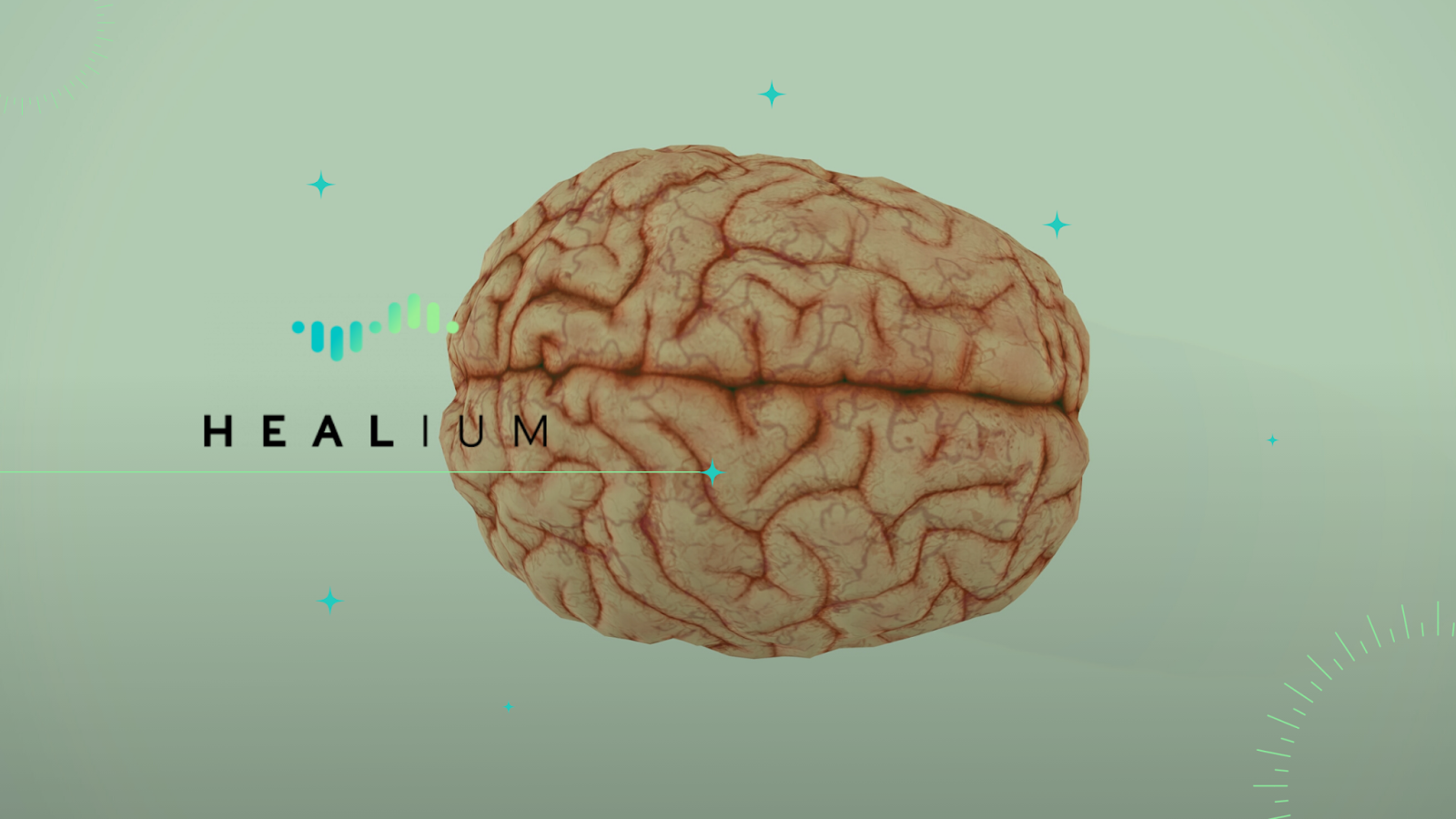Left Brain vs Right Brain: What Side Controls What?
One of the more prevalent brain myths is that one side of your brain is dominant over the other. Learn the truth in our latest blog!

People may be familiar with the question, “Are you left-brained or right-brained?”
According to popular psychology, our unique personality qualities are shaped by the dominance of one side of the brain.

Right-brained people are thought to have a greater capacity for creativity and intuition and a penchant for qualitative description of their surroundings.
On the other hand, most left-brained people are analytical thinkers who prefer logical and quantifiable explanations for their daily experiences and interactions.
However, do these ideas truly represent how our brain works? Let’s take a look.
Left Brain: What it Helps You With
The brain’s left hemisphere dominates language. It plays a larger role in speech processing and our capacity to transform sounds into words and interpret their meaning.
In addition to spoken communication, the left side of the brain is responsible for visual language. Deaf people exhibit speech-like neural activity when they see sign language. And for the majority, the left brain contains the two key language areas referred to as Wernicke’s area and Broca’s area:
– Wernicke’s area: This is located in the left temporal lobe. When this part of the brain is damaged, a person can meaninglessly ramble on and on and even make up new words. They can produce speech, but because they have difficulties understanding what is being said, they are oblivious to their own errors in speech.
– Broca’s area: This is located in the left frontal lobe. If there is an injury to this part of the brain, it may be difficult to move the facial muscles or tongue to make vocal sounds. Despite being able to read and comprehend speech, the person has trouble writing and speaking.
Fine motor skills are another left-brain function. It is responsible for reading, writing, and mathematics.
Other interpretations of the left brain have been known to refer to it as the logical half of the brain, because it pays attention to the smallest details before assembling a complete picture.
Tips for Keeping Your Left Brain Sharp
 The techniques used to strengthen the left side of the brain are often reminiscent of what we learned in school: science, mathematics, and grammar.
The techniques used to strengthen the left side of the brain are often reminiscent of what we learned in school: science, mathematics, and grammar.
Keep your left brain sharp with these suggestions:
– Solve puzzles: The brain’s left hemisphere is responsible for the logical thinking needed to solve puzzles. Try your hand at crosswords, sudoku, or scavenger hunts. These puzzle games are great for stimulating the left side of the brain.
– Train with brain teasers: Critical thinking, logic, and other reasoning abilities can be improved by working on brain teasers that engage your left hemisphere.
– Learn a new language: The left brain is also in charge of our ability to communicate in speech and writing. As a result, learning to speak or write in another language can help stimulate the left side of the brain.
Right Brain: What it Helps You With
The brain’s right hemisphere also supports language comprehension, especially the correct interpretation of phrases with multiple meanings, such as figures of speech.
It’s responsible for understanding ambiguous language and inferring emotions and underlying connotations from words.
Children’s ability to grasp concepts like “more” and “less” is widely attributed to the right side of their brains. In contrast, a child’s ability to understand numerical amounts lies more squarely in the left hemisphere.
The right brain is also responsible for paying attention to and interpreting the general shape of objects and calculating distances visually..
In addition, humans use their right brains to process emotions.
Tips for Boosting the Creativity of Your Right Brain
 Right-brain exercises have numerous advantages.
Right-brain exercises have numerous advantages.
Improved cognitive performance, reduced risk for depression and anxiety, and better sleep and quality of life are all benefits of mental activities that stimulate the right brain.
Artistic activities are a major component of right brain training designed to improve creative thinking. Here are some ideas for enhancing your right brain’s creativity:
– Express yourself through visual art: Sketching or painting helps you unleash your creative juices by putting your mind at ease. If you’d like, you can try your hand at any artistic craft.
– Learn to play a musical instrument: When it comes to singing or picking up a new instrument, it’s important to have both a logical focus and an emotional sense of the music. You can sharpen your brain’s right hemisphere by listening to new music, or even improve your sleep quality by listening to music in bed.
– Meditate: A wide range of physical and psychological health benefits have been linked to meditation. It’s calming, helps you focus, and is a great way to de-stress. A relaxed mood allows you to access your right brain’s insights better.
Recent advances in technology have even taken the effectiveness of meditation to the next level. For example, apps like Healium are blending virtual reality with meditative experiences which results in an immersive experience that compounds the benefits of traditional or audio-only forms of meditation.
Brain Myths: Is One Side of Your Brain More Dominant Than the Other?
Popular culture’s use of the terms “left brain” and “right brain” has led to a lot of misconceptions.
The concept of left- or right-brain dominance states that either side of the brain controls various ways of thinking. According to the theory, left-brained people are more logical and systematic in their thinking. On the other hand, those with a more dominant right brain have a tendency for creativity and the arts.
An entire industry has been built around this premise.
Many personality assessments, self-help books, therapies, and educational resources claim to help people enhance the functions of their brain’s dominant half or connect with the weaker side.
What The Research Says
The theory of left vs right brain dominance was most likely inspired by neuropsychologist Roger Sperry’s studies in the 1970s and 1980s. His work focused on people who had surgery to cut off the corpus callosum, the major structure linking the brain’s two hemispheres, to treat epilepsy.
One of the key findings of Sperry’s team was that the brain has distinct left and right hemispheres that are responsible for specific activities like attention and language.
Several misconceptions about how these results were interpreted lead to the common myth that people are right-brained or left-brained.
Even though some cognitive functions tend to take place in the right or left hemispheres, researchers have not uncovered evidence that one side of a person’s brain is more dominant.
In a study of 1,000 participants conducted in 2013, magnetic resonance imaging indicated that the human brain does not prefer one hemisphere over the other.
Information flows freely between the two sides thanks to the interconnection of nerve fibers. Both sides operate together and support one another despite their differing functions.
You are not limited to using a single hemisphere of your brain at any given time. It doesn’t matter if you’re rational or creative; both hemispheres of your brain are involved.
A person’s general character traits, interests, and learning methods have nothing to do with them being a left- or right-brained individual.
The Bottom Line
The human brain is a remarkable organ responsible for controlling all bodily activities, interpreting information received from the environment, and the physical manifestation of the mind and soul.
It has hemispheres that work together, whether you’re solving a complex math problem or creating an abstract piece of art.
While there is no such thing as a true left-brained or right-brained person, you can take advantage of your unique abilities and keep expanding your mind.
With proper nourishment, regular physical activity, and mental stimulation, a healthy brain is capable of absorbing new information and coming up with new ideas. Much like a balanced diet, the brain deserves balanced nourishment.
Mental fitness is the driving force behind Healium. By combining immersive VR meditation experiences with neurofeedback tools, we’ve designed a system that presents users with a self-guided way to help drive improvements in their life.
Here’s how it works!
About the Author
Sarah Hill, a former interactive TV news journalist at NBC, ABC, and CBS affiliates in Missouri, gained recognition for pioneering interactive news broadcasting using Google Hangouts. She is now the CEO of Healium, the world’s first biometrically powered VR channel, helping those with stress, anxiety, insomnia, and other struggles through biofeedback storytelling. With patents, clinical validation, and over seven million views, she has reshaped the landscape of immersive media.






